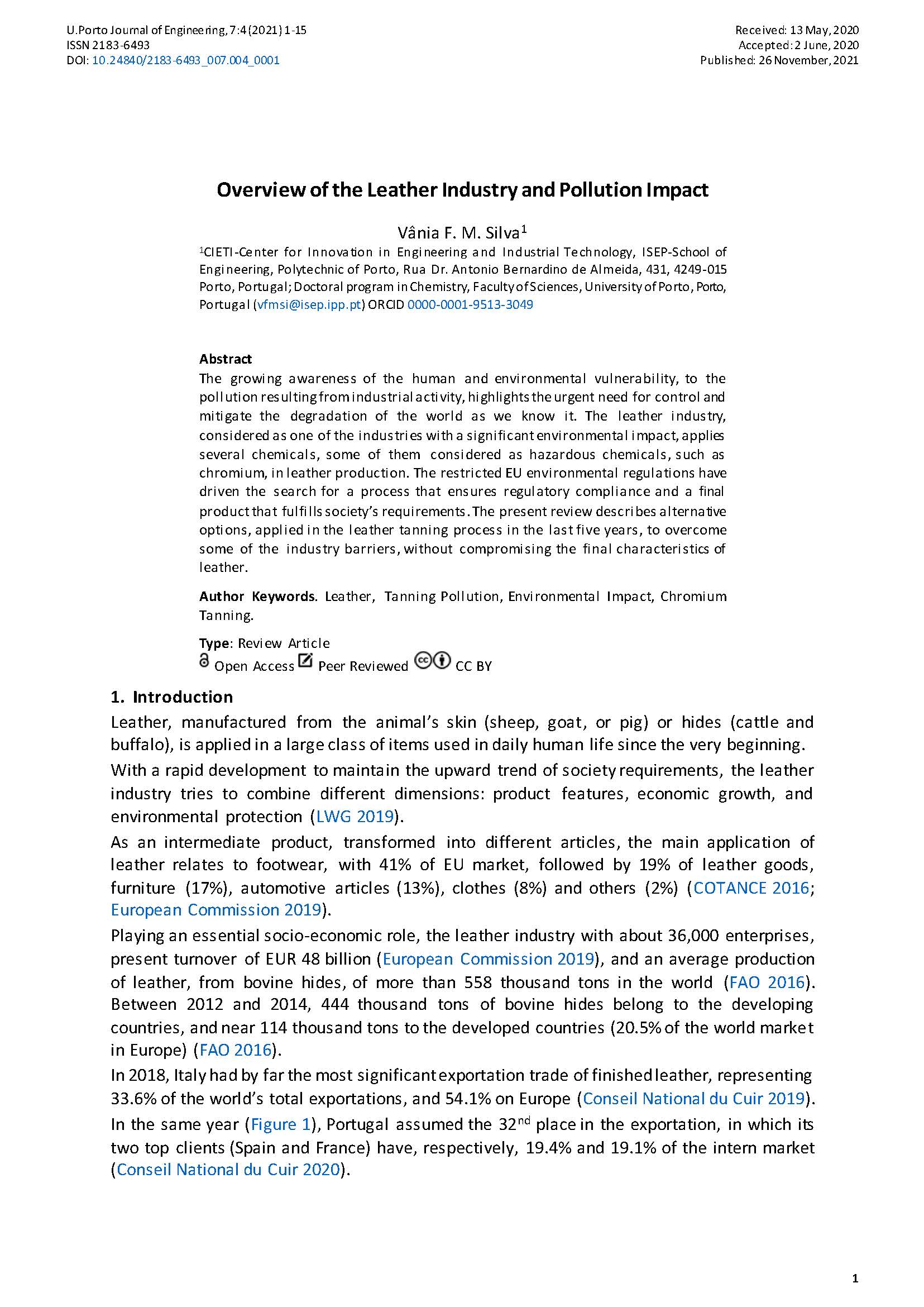Overview of the Leather Industry and Pollution Impact
Main Article Content
Abstract
The growing awareness of the human and environmental vulnerability, to the pollution resulting from industrial activity, highlights the urgent need for control and mitigate the degradation of the world as we know it. The leather industry, considered as one of the industries with a significant environmental impact, applies several chemicals, some of them considered as hazardous chemicals, such as chromium, in leather production. The restricted EU environmental regulations have driven the search for a process that ensures regulatory compliance and a final product that fulfills society’s requirements. The present review describes alternative options, applied in the leather tanning process in the last five years, to overcome some of the industry barriers, without compromising the final characteristics of leather.
Downloads
Article Details

This work is licensed under a Creative Commons Attribution 4.0 International License.
Authors who publish with this journal agree to the following terms:
- Authors retain copyright and grant the journal right of first publication with the work simultaneously licensed under a Creative Commons Attribution License that allows others to share the work with an acknowledgement of the work's authorship and initial publication in this journal.
- Authors grant the journal the rights to provide the article in all forms and media so the article can be used on the latest technology even after publication and ensure its long-term preservation.
- Authors are able to enter into separate, additional contractual arrangements for the non-exclusive distribution of the journal's published version of the work (e.g., post it to an institutional repository or publish it in a book), with an acknowledgement of its initial publication in this journal.
- Authors are permitted and encouraged to post their work online (e.g., in institutional repositories or on their website) prior to and during the submission process, as it can lead to productive exchanges, as well as earlier and greater citation of published work (See The Effect of Open Access).

